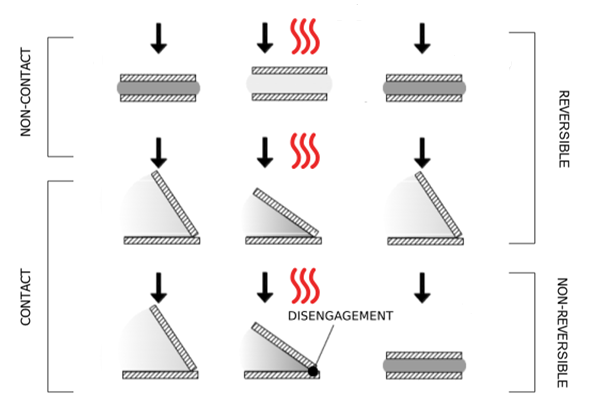Summer starts on June 20th, and clearly the GéoMéchanique group can’t help but take this opportunity to start new experiments, push publications, and network academically. Find all the news within the 32nd edition of our newsletter.
If you have something you want to share in the next newsletter, please do not hesitate to contact us at: geomecanique.newsletter@3sr-grenoble.fr .
Presentation on clay structure!
Social distancing rules can’t keep us apart – we moved our monthly meeting to the virtual world :-). This month, doctoral student Angela Casaeralla made a riveting virtual presentation covering her research on the thermal effects of clay. We learned about how thermal processes (heating in particular) contribute to reduced attraction forces on clay platelets leading to structural collapse and changes in volumetric strain.
Visiting Scholars
Our colleague Barbara Mazzolai has obtained a grant from Labex Tec21 to visit 3SR for one month — most likely in October this year. Barbara is the director of the Center for Micro-BioRobotics of IIT (Istituto Italiano di Tecnologia). Her current scientific activity focuses on bioinspired soft robotics, with a particular research interest in merging biology and engineering. She has been invited by Luc Sibille, Floriana Anselmucci, Edward Andò, Nicolas Lenoir, Robert Peyroux and Cino Viggiani — we’re looking forward to discussing plants and soil with her, and hopefully setting up new common research projects.
Our colleague Benjy Marks has obtained a grant from Labex Tec21 to spend 2 to 3 months per year in Grenoble over the next three years. His first visit is tentatively scheduled in January and February next year. Benjy works at the University of Sydney, and he is an expert in granular flow problems, such as avalanche runout, landslide and debris flow modelling. He will work on “Mapping fluid migration in granular flows”, together with Alessandro Tengattini, Edward Andò, and Cino Viggiani at 3SR — in close collaboration with Thierry Faug at INRAE (formerly IRSTEA).
Publications
Swelling SAP particles (a granular super-swelling material) in partially saturated conditions leads to rather complex couplings, but fortunately there are ways to simulate them at the pore scale based on some Yade-DEM module implemented at Utrecht Hydrogeology Group; see “Unsaturated flow in a packing of swelling particles; a grain-scale model“, 2020, Adv. Water Res., by Thomas Sweijen, Majid Hassanizadeh, and Bruno Chareyre.


